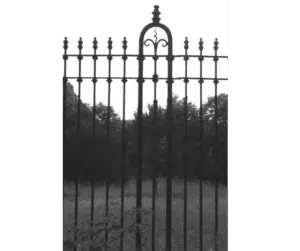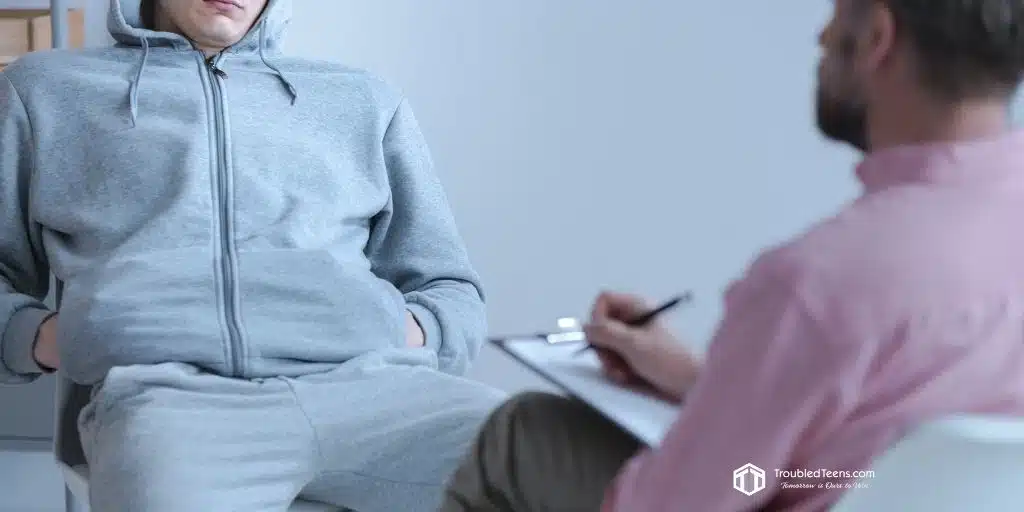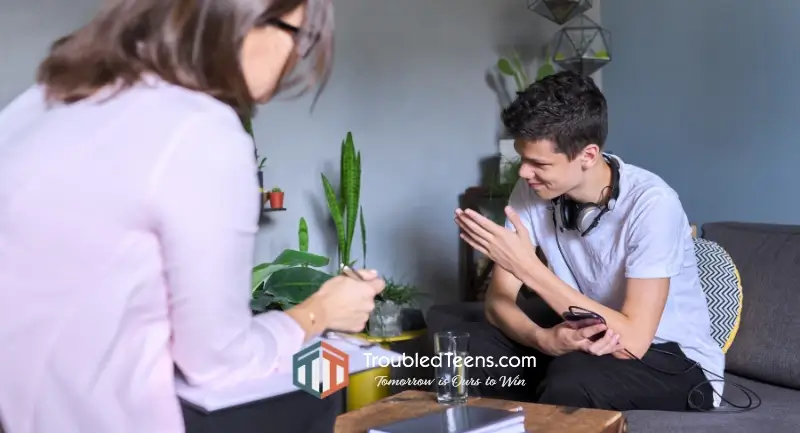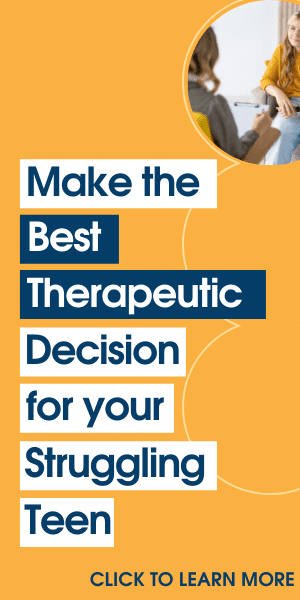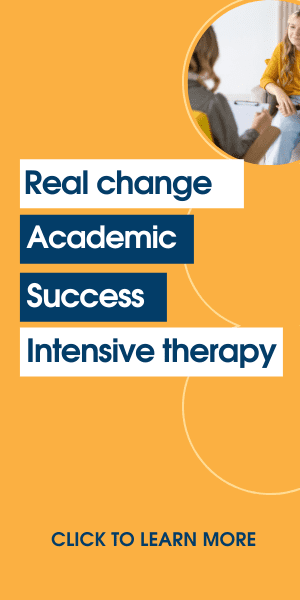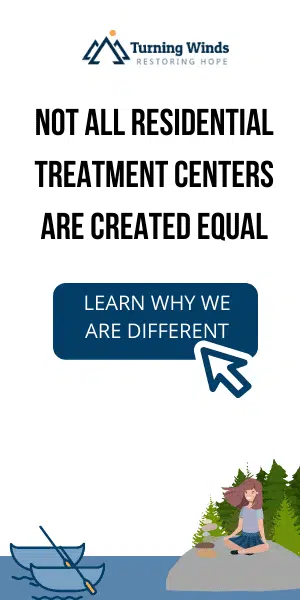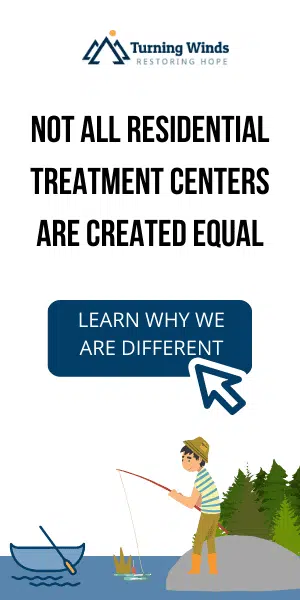Updated on October 6, 2023
Residential Treatment for Teens Then and Now
If you ask the average person without personal experience what an inpatient mental health treatment facility looks like, and they will likely conjure up images of people in straitjackets hiding in padded rooms and subjected to intensive and sometimes dangerous therapies.
Hollywood has proliferated this stigma of mental health treatment centers with many horror films over the years, and some of it is based on truth. Yet, with time, inpatient treatment centers have evolved, and today, they no longer resemble something out of a horror film.
Yet the landscape for troubled teens has been different. Though few parents would send their teens to lock them up in a padded room, many have sent them to residential treatment centers for youth. Sadly, decades ago, many of these facilities did more harm than good, and this has led to some stigma about getting help for a troubled daughter or son.
The stigma surrounding residential mental health treatment extends to teens as well as adults. While people may not picture padded walls and straitjackets when a teen goes away to treatment, they may picture something else with a negative connotation.
Thankfully, teen residential treatment centers have evolved over the last two decades, and today they are a valid and effective way to help troubled teens work through their emotional, behavioral, or mental health problems.
A closer look at this history will help families understand that they do have options to help their troubled teenager and that those options are now a safer way to get help.
What Treatment Looked Like Historically
While recent years have seen a rise in problems with teenagers, the need for residential treatment centers is not really new.
Treatment centers began to appear in the country in the 1940s, and by the 1950s they began to resemble what they are today. Every year, around 50,000 children are admitted to residential treatment, and since the 1950s the therapies and treatment settings have changed.
A couple of decades ago, treatment centers were locked down locations where residents had to follow strict obedience to the rules. Often, rather than focusing on therapy to change behavior and thinking, these programs focused on removing outside influences and coercing children into obeying their authorities in order to achieve changes in behavior.
Residential Treatment in the 1940s and 1950s
In the early days of residential treatment, institutionalizing children happened due to economic reasons, as families with struggling children needed help to reach those children. In 1954, the American Orthospychiatric Association held a symposium on the topic that resulted in the foundation of the American Association of Children’s Residential Centers. That began a slow but steady growth in the creation of residential treatment for teens in the United States.
Residential Treatment in the 1970s and 1980s
In the 1970s and the 1980s, the distinction between medical hospitals and residential treatment for troubled teens was made. Hospitals were facilities for mentally disturbed patients who needed the oversight of doctors and nurses, while residential treatment was more appropriate for teens struggling with behavior and depression. Instead of doctors and nurses, these facilities had psychologists and social workers.
While this was a step in the right direction of creating treatment centers that worked, it came under heavy fire. Many people argued that removing children from their parents in treatment created more problems than it solved. Many of these early residential treatment centers were extremely locked down, with minimal interaction from parents, and this led to institutional behavior of the children who went through the program.
The Reaction of the 1990s
In the 1990s, demand for community-based alternatives to institutionalize residential treatment rose in many areas of the United States. Day hospitals and family preservation programs came to the field. This led to quite a bit of positive change in the industry.
While the shift in the 1990s did not eliminate the need for residential treatment, it did point out the need for multi-systemic treatment for troubled teens. This means that treatment centers started to embrace a range of therapy types and structures. While some remained extremely locked down, others embraced family interaction. This was also the decade when medication for depression and other mental health and behavioral disorders was woven into residential and outpatient treatment, and this had a significant positive impact on the teens in treatment.
Sadly, in this decade many treatment centers were places of abuse for the teens who need help the most. Many programs were very locked down with minimal interaction with parents.

While her experience was not as negative as others and did not involve abuse, she graduated from the program and immediately divorced her parents, and declared herself an adult, which indicates how uninvolved parents were in her treatment.
Others who survived the residential treatment centers of the 1990s had a much more dire picture to paint. Paris Hilton, who was sent to a facility in Utah in the 1990s designed to help troubled teens, reported being hit, strangled, and yelled at in order to instill fear and make her obey. She became even more anxious and depressed while at the facility.
The New Millennium and New Treatment Options
By the year 2000, there were approximately 250,000 adolescents in residential treatment centers. Youth suffering from high-risk behaviors, such as suicidal ideation or aggression, can benefit from residential treatment significantly.
An Increase in Regulations
The vocal criticism of high-profile people like Paris Hilton showed some of the horrors of residential treatment in the 1990s. Interviews revealed stories of abuse and mistreatment rather than support and care. This led to the government getting involved and shutting down the worst of these programs.
Many states have set regulations in place to prevent these types of abuse, while encouraging quality programs to thrive.
In 2019, Montana finalized rules and regulations for private youth therapeutic programs that were previously self-regulated, helping to regulate an industry that is highly needed.
These state regulations come partially in response to trends seen in Utah. Utah has thousands of residential treatment facilities for teens, and those facilities bring in a significant amount of revenue. Sadly, they are also the places where abuse allegations run rampant. Lawmakers across the country are pushing for more regulation in this particular state and setting regulations in place in their own states, to protect teens that are in need of residential therapies.
Type of Treatment Centers for Today’s Teens
Today, families with troubled teens have four basic types of residential treatment centers they can choose from as they seek to get the right help for their child. Understanding these types will help struggling families choose the right type of therapy for their kids.
Locked Down Residential Treatment for Teens
Locked-down treatment centers take in troubled teenagers and cut them off from most interaction with life outside the center. The theory here is that removing triggers and outside influences allows the teen to focus on their own behavior and mental health, so they are not constantly pulled by toxic influences from friends and family.
Locked-down treatment can take place in a hospital and institutional-like setting, or they can take place in a home-like setting. The main unifying feature of these programs is the fact that the teens in them get little interaction with the world outside the therapy center. Often teens are allowed letters home and supervised phone calls only, and this is what allowed many of these locked programs to create abusive environments. This is an intense type of therapy that is typically short-term in nature.
Unlocked Treatment Centers
Unlocked treatment allows parents to interact with the teens while they are in therapy. This is a much more open type of treatment, with parent weekends, daily or weekly visits, phone calls, or Zoom meetings with the teen and with the staff. The goal of unlocked treatment centers is to focus on fixing the entire family, not just the teen.
Because unlocked treatment centers involve the whole family, the outcomes are often more positive. Teens are able to change their behaviors and toxic thinking, and families learn how to set the stage for success when treatment is over. The therapists and parents become partners in helping their teens succeed.
Short-Term Mental Health Treatment
Short-term treatment is for crisis situations. When teens express suicidal ideation or are in danger of harming themselves or others, they need a short-term solution to diffuse the crisis and start the path to recovery. Sometimes all the teen needs is short-term therapy, but often short-term treatment is the first step in long-term care.
Short-term treatment centers are often highly restrictive in nature. The goal of these programs is to ensure the safety of the teen and those around them while making a plan for therapy in the future.
Long-Term Therapeutic Programs
Long-term therapy programs are designed to provide stability over an extended period of time. These programs, which often have a clinical team and onsite therapists, are the most effective. They are often unlocked and open with the parents and use a range of treatment modalities to address the behavior of the teens in the program.
The length of time a teen needs to spend in treatment for anxiety and depression or other mental health and conduct disorders varies. What these long-term treatment centers recognize is that teens respond at different rates to the therapy they are presented with, and as such, they need personalized approaches in treatment. By committing to long-term treatment in a residential center, parents are committing to ensuring their teens can get that personalized approach.Res
Would you like more information on long-term treatment programs for your teenager? Our family advocate is available to help you find the right residential treatment for your teenager.
Common Therapies Used in Today’s Residential Treatment Programs for Youth
- Acceptance and Commitment Therapy – This therapy helps children accept their emotions and understand them, so they can move forward and embrace those feelings.
- Cognitive Behavior Therapy – One of the most common types of therapy, CBT helps teens examine their confused and disordered thinking in order to change their mood and behavior. Teens are given the tools to identify and stop harmful thought patterns.
- Dialectical Behavior Therapy – For older teens with chronic feelings of self-harm, DBT teaches them to take responsibility for their problems, so they can deal with negative emotions.
- Family Therapy – This therapy brings the family into treatment to explore ways the entire family, including parents and siblings of the troubled teen, communicates and how that might contribute to problems.
- Group Therapy – In group therapy, multiple teens work with a therapist to deal with their problems. Peer interaction can be very therapeutic when combined with individual therapies.
- Interpersonal Therapy – This therapy is used for a short time to identify personal events that might have an impact on how the child is thinking.
- Mentalization-Based Therapy – Teens who have identity disorders can benefit from MBT.
- Parent-Child Interaction Therapy – This program teaches parents how to interact with their children in a more positive way.
- Play Therapy – Children and teens can use drawings, games, and toys to verbalize feelings while working with a therapist.
- Psychodynamic Psychotherapy – This therapy analyzes the thoughts and feelings that drive behavior patterns. It requires multiple sessions each week, which makes it a good option for a residential treatment setting.
- Supportive Therapy – Teens that are struggling with low self-esteem can get support to deal with stress and eliminate helpful behaviors with this approach.
In most residential treatment settings, the teens who come with mental health, conduct, and adjustment disorders need a variety of treatment modalities. The benefit of residential treatment is that it provides the time for therapists to tap into each of these to find the right treatment for the individual teens’ needs.
Learn more about Dual Diagnosis Treatment for Troubled Teens.
The Impact of Academics

Residential Treatment for Troubled Teens is Changing, and For the Better
Over the years, residential treatment for teens has come under fire. As celebrities and others have brought light to the abuse suffered in some treatment centers, state and local governments have stepped up to improve the situation for today’s teens. What has happened as a result is that the best treatment centers have survived while bad, dangerous programs have been shut down.
Today, an increased number of standards and rules are in place to protect teens and keep treatment programs that work open and available to help families. If your struggling teenager needs help, you can find an effective and safe long-term treatment program that will provide the best clinical help for their unique needs.
Your teenager can learn to manage or overcome common problems like anxiety and depression through effective therapy sessions in a safe, supportive environment. They will get the tools they need to heal and thrive again.
If you have a troubled son or daughter at home, don’t wait. Get help that works. Don’t let the stigma of past problems in troubled teen residential treatment facilities and programs of the past, like boot camps for youth, keep you from getting your child the help they need.
Residential Treatment Centers For Youth
When everything you try fails, a therapeutic residential treatment center can help your troubled son or daughter overcome and thrive in a supportive environment.
Help is available for you now to get more information. Please click the button below to speak to a family advocate and learn more about ALL the treatment options available to help your teenager.
Yes, I want to speak to speak to a family advocate


